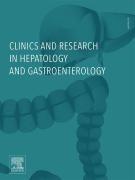Use of Hepatoscope 2DTE for non-invasive assessment of liver stiffness among Mexican immigrant adults in a community-based setting - 26/03/25
 , Cindy Serdjebi 2, ⁎, Adriana Maldonado 1, Estefania Ochoa Mora 3, Adrien Besson 2, Naim Alkhouri 4, David O. Garcia 1
, Cindy Serdjebi 2, ⁎, Adriana Maldonado 1, Estefania Ochoa Mora 3, Adrien Besson 2, Naim Alkhouri 4, David O. Garcia 1Cet article a été publié dans un numéro de la revue, cliquez ici pour y accéder
HIGHLIGHTS |
• | Hepatoscope 2DTE provides image guidance and stiffness imaging |
• | 2DTE shows comparable results to FibroScan VCTE with no systematic bias |
• | This study validates the use of Hepatoscope for point-of-care liver assessment |
• | Hepatoscope can be utilized in community-based settings for risk stratification |
Abstract |
Purpose |
Mexican-origin adults have one of the highest rates of metabolic dysfunction-associated steatotic liver disease (MASLD) and its severe form metabolic dysfunction steatohepatitis (MASH) in the US. Given the costs and invasiveness of liver biopsy, this study assessed the application of Hepatoscope® 2DTE, the latest-generation transient elastography for liver stiffness in Mexican adult immigrants from Southern Arizona and compared it with FibroScan® VCTE™.
Methods |
Participants (n=199) from a cross-sectional community-based study completed anthropometric measures, demographic information, a blood draw, and liver stiffness measurements (LSM) with FibroScan VCTE and the ultraportable Hepatoscope 2DTE. LSM2DTE and LSMVCTE were compared using Spearman's correlation and Bland-Altman analysis. The number of at-risk for fibrosis participants as assessed using each system was compared according to FIB-4.
Results |
A total of 122 participants were considered for this sub-analysis which consisted of 71.3% women. Mean age was 51.9 ± 12.1 years, BMI was 30.7 ± 5.7 kg/m², 43.4% of participants had obesity, and 19.7% were diabetic. Mean FIB-4 was 1.00 ± 0.53, and median LSM were 5.6 [4.7 - 6.7] and 5.3 [4.1 - 5.8] kPa for 2DTE and VCTE, respectively. 2DTE significantly correlated with VCTE (r = 0.53, p < 0.0001) and there was no systematic bias between the two LSM. There was no difference in the number of at-risk for fibrosis participants between the two LSM per FIB-4 categories.
Conclusion |
Hepatoscope can be used for point-of-care liver stiffness assessment and risk stratification of adults at risk of liver fibrosis in community-based settings.
Le texte complet de cet article est disponible en PDF.Keywords : transient elastography, liver stiffness measurement, MASLD, Mexican, Hepatoscope, point-of-care, liver fibrosis
Plan
Bienvenue sur EM-consulte, la référence des professionnels de santé.
L’accès au texte intégral de cet article nécessite un abonnement.
Déjà abonné à cette revue ?

